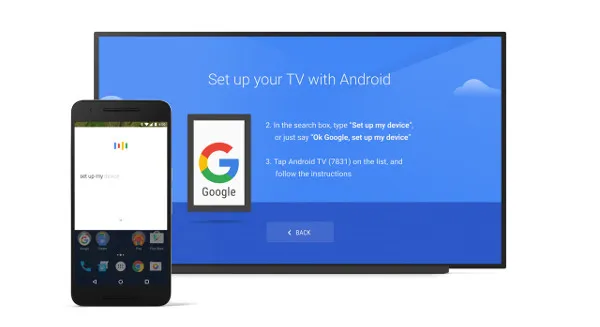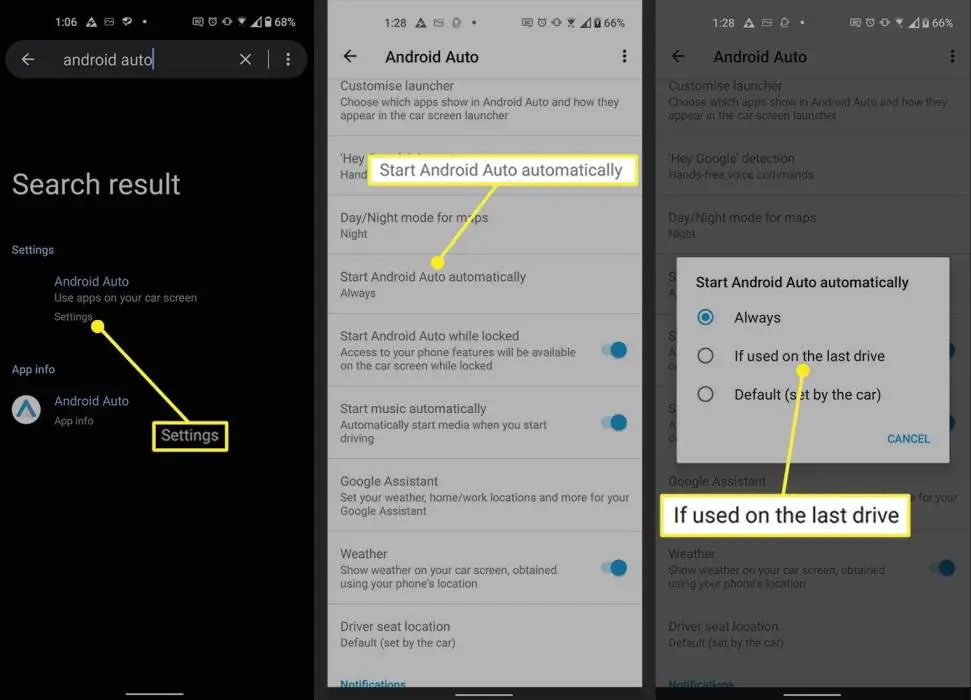
The App Tracking Transparency recession
My Federal Reserve driver, Mr. Peña, provided the conclusive vestige of victory. On the way to speak at a big Washington dinner, I spotted a typesetting on the front seat next to Mr. Peña with the title How to Live with Inflation. Shocking that my own suburbanite had no conviction in me! But, Mr. Peña explained, he’d only bought the typesetting considering its price had been marked lanugo to $1.98 from $10.95. –Paul Volcker, Keeping At It
In this piece, I’ll oppose that Apple’s App Tracking Transparency (ATT) privacy policy, withal with consumer preference changes reflecting a reversion to pre-COVID behaviors, has created a recession within the social media razzmatazz economy and unrepealable other advertising-dependent categories. I’ll propose — with tampering support — that macroeconomic frictions mostly have not harmed the broader digital razzmatazz sector, and that, to the undisciplined and excluding social media advertising, the current digital razzmatazz market is robust, as are other corners of the consumer economy, supported by a resilient American consumer. Note that I focus on the US economy in this piece, as the primary market for the companies stuff considered is the United States.
While undeniably imprecise, since multiple countervailing forces are at play in the post-lockdown economy, I believe this tampering exercise is important to undertake, for two reasons:
- An towage of ATT’s economic impact provides guidance for estimating the impact of the eventual deprecation of third-party cookies in Google’s Chrome Browser;
- If a recession does occur in the United States and elsewhere, it will manifest further pressures on the digital razzmatazz ecosystem, for which advertisers should be prepared.
This piece is comprised of six sections:
- Introduction
- The Fed’s pilgrimage versus inflation
- A short primer on digital razzmatazz and Apple’s App Tracking Transparency policy
- The resilient American consumer
- Divergent paths: Social Media razzmatazz and Everything Else
- Everything is an Ad Network
Introduction
Price inflation on the understructure of the consumer price alphabetize (CPI) peaked in June 2022 but remains stubbornly upper — standing at 6.5% in December, the last month for which it has been reported as I write this, and lanugo from 7.1% in November. Sustained inflation whilom some target rate is an wrongheaded condition in an economy; Milton Friedman famously quipped that “inflation is unchangingly and everywhere a monetary phenomenon,” meaning a function of the money supply. But price inflation can be a sign that an economy is overheating — that is, that demand grows at a pace that can’t be satiated with productive topics (supply).
The broader Big-T Tech sector has felt a tremendous value of pain in terms of market capitalization wrinkle over the past year as the Fed’s longstanding Zero Interest Rate Policy (ZIRP) gave way to an unprecedented regimen of warlike interest rate hikes. But the social media razzmatazz sector in particular experienced vigilant revenue shocks over the undertow of 2022, with revenue growth slowing dramatically and plane pitching into negative growth in some cases.
Many commentators point to the deterioration of Big-T Tech P/E multiples as a sign of a downturn in the sector, but many public tech companies featured negative unit economics surpassing COVID that did not modernize during the pandemic, plane if revenue growth accelerated. It’s entirely logical that these businesses see their market capitalizations recede as interest rates rise.
Many companies wideness the technology ecosystem — but expressly those involved in eCommerce, which benefited propitiously from the COVID pandemic as consumer retail spend shifted online — have addressed pandemic-era employee growth through consequential layoffs. But the broader labor market in the United States remains robust. The Bureau of Labor Statistics revealed last week, on January 6th, that the unemployment rate sat at 3.5% in December — a 53-year low.
But one might seem that the economy has utterly imploded from reading the Q3 earnings undeniability transcripts of various social media platforms. Alphabet, Meta, and Snap, in particular, cited macroeconomic weakness, headwinds, uncertainty, challenges, etc. in their Q3 earnings calls.
Alphabet:
Meta:
Snap:
But whispered from various corners of the economy that are particularly sensitive to interest rate increases, such as Big-T Tech, homebuilding, and finance, much of the consumer economy is robust. Nike reported 17% year-over-year revenue growth in its most recent earnings release last month; Costco reported year-over-year sales growth for December of 7% on January 5th; Walmart’s 3Q 2023 results, reported in November 2022, saw the retailer grow year-over-year sales by 8.2%; and overall US holiday retail spending increased by 7.6% year-over-year in 2022, vibration expectations. Of course, these numbers are nominal and not real, but for comparison: holiday retail sales in 2008 were lanugo between 5.5 and 8% on a year-over-year basis, and the unemployment rate in December 2008 stood at 7.3%. And as I’ll unpack later in the piece, many participants in the broader digital razzmatazz ecosystem saw strong revenue growth in 2022 through Q3.
So what’s the source of the pain for the largest social media razzmatazz platforms?
Apple introduced a new privacy policy tabbed App Tracking Transparency (ATT) to iOS in 2021; with iOS version 14.6, that policy reached a majority scale of iOS devices at the end of Q2 2021, in mid-June. ATT fundamentally disrupts what I undeniability the “hub-and-spoke” model of digital advertising, which allows for behavioral profiles of individual users to be ripened through a feedback loop of conversion events (eg. eCommerce purchases) between ad platforms and advertisers. In this feedback loop, ad platforms receive conversions data from their razzmatazz clients, they use that data to enrich the behavioral profiles of the users on their platform, and they target ads to those users (and similar users) through those profiles. I’ve written extensively well-nigh how ATT disrupts the digital razzmatazz ecosystem, but the disturbance is most pronounced for social media platforms as I’ll describe later in the piece. The shocks of ATT became discernible in Q3 2021 (the quarter without ATT was rolled out to a majority of iOS devices) but were substantially troublesome for Meta in particular in Q4 2021. The disruptive forces of ATT have compounded over time.
My unstipulated weighing is that the impact of ATT has been underestimated; ascribing the razzmatazz revenue headwinds stuff felt most profoundly by social media platforms and other consumer tech categories with substantial exposure to ATT to macroeconomic factors is misguided. The unstipulated thesis of this vendible encompasses three points:
- That the broader digital razzmatazz market is not in the midst of a cyclical downturn;
- That social media razzmatazz platforms and the other consumer technology categories that were undeniably exposed to the disruptions of ATT are experiencing revenue frictions that are principally driven by the combination of ATT and waffly consumer preferences related to the vitiation of the COVID pandemic and not macro factors;
- That a potential recession in 2023 would produce spare revenue pressures on those same social media razzmatazz platforms and ATT-disrupted consumer technology categories, as well as the broader razzmatazz market.
Layoffs and stock price contractions create real human pain, and I don’t intend to minimize that with this piece. The purpose of this piece is to struggle to unwind the impact of various factors on the social media razzmatazz space and to highlight the specific detrimental impact that ATT has imposed there, while moreover highlighting the relative health of other portions of the digital razzmatazz landscape. My motivation for writing this piece — which puts along a nuanced, multi-faceted treatise — is to yank sustentation to the various considerations that should be undisputed by marketers if ATT, and not macro factors, is responsible for the ousting of efficiency in social media advertising:
- If a recession does take form in 2023, then even increasingly challenges sit on the near-term horizon for advertisers;
- The undisputed impact of ATT provides helpful guidance for estimating the effect of third-party cookie deprecation in the Chrome browser and the deprecation of the GAID on Android, in wing to the rollout of the DMA and DSA in Europe and potential Federal privacy legislation in the United States;
- Since ATT is systemic and permanent, as will be other policy and legislative initiatives, and not a fleeting miracle (like a downturn in the economic cycle) that advertisers can simply wait out, then advertisers should shift their sustentation to resilient methodologies related to measurement and regulars targeting that will endure for the long term.
The Fed’s pilgrimage versus inflation
Persistently elevated inflation has specified the American — and global — economy since the Spring of 2021. The COVID pandemic and Russia’s invasion of Ukraine (and the resultant energy slipperiness it caused in Europe) are often cited as the primary and principal factors that caused inflation to rise to levels not seen in over four decades, since Fed Chairman Paul Volcker tamed the runaway inflation of the late 1970s and early 1980s. Untied from these two causes, little consensus exists virtually how the current inflationary environment was shaped by the various knock-on effects of those causes: a surplus of demand sparked by government stimulus unleashed wideness the world, a supply uniting crisis engendered by COVID-related stay-at-home policies, or some combination of both. For consumers, the underlying agitations and components of inflation are abreast the point.
The most recent US consumer price alphabetize (CPI) data released by the Bureau of Labor Statistics puts year-over-year price inflation in December at 6.5%, which represents a subtract of 0.1% from November’s value. This is a subtract from 9.1% in June 2022, when inflation seemingly peaked in the United States. The Euro-area inflation rate seems to lag that of the United States, with inflation there having peaked thus far at 10.6% in October 2022 and sitting at 10.1% in November, but with a wholesale range wideness plug-in countries.
Inflation is a disaster for consumers: it erodes the purchasing power of wages and savings, it puts economic pressure on households considering prices increase in real-time while wages are static in the short term, and it confounds household planning (such as ownership a home or starting a family). The US Federal Reserve’s mandate as an organization is twofold: to unzip 1) full employment and 2) price stability (ie. to alimony inflation relatively consistent). The Federal Unshut Markets Committee, or FOMC, is a committee within the Fed that is responsible for directing monetary policy through unshut market operations, which entails ownership and selling US government securities. The FOMC moreover sets targets for the Federal Funds Rate, which is the interest rate that financial institutions tuition each other on overnight deposits and which percolates into all corners of the economy, such as credit vellum and mortgage interest rates. Back in 2012, the FOMC established an explicit year-over-year inflation target of 2%. Inflation is currently much higher than 2%, which has prompted the Fed to take decisive whoopee in reducing it. (For increasingly preliminaries on the Federal Reserve, I enthusiastically recommend the typesetting The Lords of Easy Money)
The target for the Fed Funds Rate was reduced dramatically over the undertow of 2007 and 2008 to roughly 0 to write the Global Financial Crisis; the Fed began raising rates in 2016, but it reversed undertow in the summer of 2019 when it began a rate-cutting regimen in the squatter of a slowing economy.
As COVID took root wideness the globe, the Fed then cut the Fed Funds Rate aggressively to roughly 0, where it remained until March 2022, when, in light of elevated inflation and Russia’s invasion of Ukraine, the Fed raised rates for the first time since December 2018.
Per the orchestration above, the Fed increased the target range for the Fed Funds rate seven times in 2022:
- March 17th, 2022: 25 understructure points, from 0-0.25 to 0.25-0.5;
- May 5th, 2022: 50 understructure points, from 0.25-0.5 to 0.75-1.0;
- June 16th, 2022: 75 understructure points, from 0.75-1.0 to 1.5-1.75;
- July 28th, 2022: 75 understructure points, from 1.5-1.75 to 2.25-2.5;
- September 22nd, 2022: 75 understructure points, from 2.25-2.5 to 3-3.25;
- November 3rd, 2022: 75 understructure points, from 3-3.25 to 3.75-4.0;
- December 15th, 2022: 50 understructure points, from 4.25-4.5.
A short primer on digital razzmatazz and Apple’s App Tracking Transparency policy
In June 2020, at its yearly developer conference, WWDC, Apple spoken a new privacy for iOS: App Tracking Transparency, most wontedly referred to as ATT. The ATT policy requires apps to present users with an opt-in prompt for what Apple describes as “tracking,” which relates to the practice of sharing user data wideness contexts and with parties that a user may not have interacted with directly. On mobile, cross-context data sharing is mostly workaday through Mobile Razzmatazz Identifiers, or MAIDs. The MAID on iOS is tabbed the Identifier for Advertisers, or the IDFA (on Android, the MAID is tabbed the Google Razzmatazz Identifier, or the GAID).
With its ATT policy, Apple states that users must proactively opt into having their data shared with third parties, such as with razzmatazz platforms. Prior to ATT, a user’s IDFA was used as a worldwide identity that unliable their worriedness in an app to inform razzmatazz decisions made on razzmatazz platforms like Meta’s, Snap’s, TikTok’s, YouTube’s, etc. Note that when a user opts out of the ATT prompt for a specific app, the ATT policy dictates that the app may not share any identifier — not just the IDFA, which is restricted if a user opts out — for that user with a third party for the purposes of razzmatazz targeting. For instance, sharing a user’s email address, real name, phone number, etc. with a third party is strictly prohibited when a user has opted out of the ATT prompt.
An razzmatazz efficiency feedback loop is enabled by unique identifiers: an razzmatazz platform exposes a user to an ad, the user clicks on the ad and lands at a mobile app or website, and that mobile app or website reports that user’s worriedness on their property when to the razzmatazz platform. This feedback loop allows the forerunner to do two things:
- To understand what other apps or websites it should promote to that user in the future, based on that user’s interactions with the current app or website;
- To identify other users to which the advertiser’s product should be promoted, based on the razzmatazz platform’s knowledge of how the current user interacted with the product that was advertised to them.
The diagram below, from this post, describes this feedback loop (Facebook is used as an example in the diagram, but many other ad platforms could be substituted in its place):
It’s important to note or reiterate a few characteristics of the ATT policy:
- ATT moderates the use of any identifier, including emails, for razzmatazz measurement and targeting, not just the IDFA;
- ATT exclusively regulates ads displayed in mobile apps, but it applies to ads that lead to app and web destinations. But in-app razzmatazz represents a majority share of the digital razzmatazz market: the vast majority of time spent on mobile is captured by mobile apps (and not the mobile web).
Digital razzmatazz platforms engage in three separate activities:
- Targeting: determining the towardly group of people, or audience, to which an advertiser’s ads should be exposed;
- Ad serving: filling an impression on a property with an ad;
- Measurement: determining the value (in observed or expected terms) of a served ad.
ATT fundamentally prevents ad targeting at the level of an individual user: since user profiles cannot be ripened through aggregated, user-level conversion data — like purchases, registrations, ‘add to cart’ actions, etc. — then the user-level targeting mechanics previously employed by large platforms are rendered inoperable. These platforms must revert to group-level targeting, which scrutinizingly by definition is less precise and efficient than user-level targeting, expressly since the wholesale demographic data — such as age, gender, and geography — misogynist to walkout ad platforms often siphon very low predictive power for purchase intent. I unpack the mechanics of this dynamic in Why did CPMs increase pursuit App Tracking Transparency?.
As I discuss in IDFA deprecation: winners and losers, ATT is most disruptive to companies that fit a specific profile. The primary ad platforms and ad networks of focus in this piece are Meta, Snap, and YouTube, since they are public companies and they facilitate the hub-and-spoke feedback model described above; Google Search is largely exempt from ATT, as are desktop and browser-specific ad networks. The principal forerunner categories of focus are eCommerce and mobile apps (but expressly mobile gaming).
For ad platforms and ad networks, the magnitude of exposure to ATT is unswayable by whether they:
- Serve in-app walkout ads that rely on user-level behavioral profiles and not any other type of context (eg. search queries, site content) for targeting;
- Employ a pixel, in-app SDK, or server-to-server API to collect user-level conversion signals from razzmatazz clients;
- Allow user-level and “lookalike” targeting facilitated by user identifiers such as MAIDs, email addresses, etc.
- Aggregate “device graphs” of MAIDs for the purpose of targeting specific users in the unshut programmatic environment.
For advertisers that buy in-app inventory, the magnitude of exposure to ATT is unswayable by whether they:
- Rely heavily on “lookalike” regulars targeting on large razzmatazz platforms, facilitated by the provision of user-level identifiers to those platforms;
- Rely heavily on user vanquishment or “retargeting” through the provision of user-level identifiers to ad networks;
- Operate niche products that require specific behavioral knowledge of potential users for profitable advertising unit economics;
- Operate products that see a long-tail distribution of Lifetime Value, or LTV, where a very small minority of highly-engaged users generates the vast majority of revenue.
Note that the impact of ATT is not just expressed within razzmatazz targeting: it moreover disrupts measurement, or profitability accounting. For mobile app advertising, the tool that Apple provided to replace the user-level conversion observation that was previously facilitated with the IDFA is tabbed SKAdNetwork. SKAdNetwork was profoundly inadequate for proper razzmatazz measurement at the time that ATT was launched; Apple released an improvement to SKAdNetwork late last year, but the stratum to which it will goody measurement for app razzmatazz campaigns is as yet unclear. And notably, Apple’s Private Click Measurement (PCM) specification, which has influenced web razzmatazz wayfarers measurement for ad platforms for compliance with ATT, is considerably increasingly restrictive than the pre-ATT measurement status quo.
The social media razzmatazz sector is currently under substantial duress with respect to revenue growth — and, in some cases, is experiencing year-over-year revenue contraction. I’ve covered these revenue hardships on a quarterly understructure for Meta (Q4 2021, Q2 2022, Q3 2022), Snap (Q2 2022, Q3 2022), and Alphabet (Youtube) (Q1 2022, Q3 2022). Note from the previous section that the Fed only began hiking rates in March 2022 (late Q1); Snap first reported that its revenue was impacted by ATT in its Q3 2021 earnings report, which caused its stock price to waif by 25%. Snap missed revenue estimates in Q3 2022, one year later, causing its stock to waif 30%. Meta’s stock dropped by 26% without reporting Q4 2021 results, which showcased weaker-than-expected revenue growth. Meta’s stock dropped by 25% without it reported its Q3 2022 results.
Some might squint to wound in the social media razzmatazz space and consider it an isolated problem. But slowing revenue growth, or revenue declines, on these platforms is, by definition, the magnitude of a reduction in spending from advertisers. Advertisers are spending less money on these platforms considering the economics of their razzmatazz budgets has degraded. Uncontrived response advertisers spend versus return-on-ad-spend (ROAS) targets, and budgets and ROAS tend to walkout an inversely correlated relationship: as budgets increase, ROAS decreases, and vice versa. As a result of a ripen in efficiency (ROAS), advertisers will subtract spend. And if no other platform exists to swizzle that spend, then that spend can simply evaporate, meaning those advertisers buy less revenue.
This has demonstrably happened. Newzoo estimates that the mobile gaming category, which is as large as the PC and panel gaming categories combined, contracted by 6.4% in 2022; data.ai (formerly, AppAnnie) estimates roughly a 5% wrinkle for 2022, with a 3% ripen in 2023. While it’s difficult to parse untied the effects of consumer preference changes related to COVID and ATT on mobile gaming, it’s interesting to note that 2022 is the first year for which the mobile gaming market has overly declined; rather than seeing a pronounced jump in revenue in 2020 or 2021 from the COVID pandemic, mobile gaming mostly grew at a predictable prune for those years, per the orchestration above.
Direct-to-Consumer (DTC) retailers, which are often dependent on social media razzmatazz for sales, have likewise seen a diminution in razzmatazz efficiency since ATT was introduced. I discuss the erosion of razzmatazz performance and efficiency in the eCommerce category with the owner of Worldwide Thread, a large DTC razzmatazz agency, in this podcast. Equal to the Wall Street Journal, nearly 50% of eCommerce advertisers polled had decreased spend on Facebook by increasingly than 25% as a result of ATT.
It should be noted that, while ATT only impacts the iOS ecosystem, iOS captures both the majority of smartphone share in the United States (but a minority worldwide) as well as the majority of in-app revenue, which seems reasonable to extrapolate to mobile eCommerce retail purchases. Critically, the share of razzmatazz revenue generated on iOS devices shrank from 60% in 2020, surpassing ATT was introduced, to 46% in Q2 2022. Again, it’s reasonable to deduce that this reduction wasn’t the result of a share shift — that is, advertisers shifting budgets sustainably to Android — but rather of a dissipation of ad spend on iOS.
The resilient American consumer
The consumer is the thrump-cap of the American economy, written for 2/3rds of GDP. If consumers capitulate and stop spending in light of upper inflation or other economic pressures, the economy will falter. An razzmatazz recession seems predicated on that eventuality, as I point out in my Advertising Strategy in a Recession presentation. Is the American consumer healthy?
On January 6th, the Bureau of Labor Statistics released its Employment Situation Summary report for December. The BLS reports that the US economy widow 223,000 non-farm payroll jobs in December, lanugo from a revised 256,000 in November, which results in a three-month moving stereotype of roughly 247,000 job additions per month. This represents a substantial ripen from the three-month stereotype for July through September, which stood at 366,000 new jobs per month. While the job growth for December was higher than consensus expectations of 200,000 new jobs, the ripen in job growth over time is reflective of a moderating labor market, which is likely what the Federal Reserve hopes to unzip with its interest rate policy: slowing job growth creates slack in the labor market, which ultimately could lead to decreases in inflation. Per the section whilom on inflation, this seems to be taking shape.
To that point: as noted earlier, the unemployment rate in December decreased to 3.5%, which is a 50-year low. While this could be considered at odds with the Federal Reserve’s policies, given the focus on reducing inflation, the unemployment rate inched lower for reasons that can be considered optimistic (with respect to decreasing inflation). Labor gravity participation increased for the first time since August, and employment increased by roughly 717,000 in the household employment survey that had exhibited weakness in recent months: growth from September to October was -257,000, and growth from October to November was -66,000. The payroll and household unemployment surveys use variegated methodologies, and when they conflict, economists tend to put increasingly weight on the establishment survey (which in December reflected 223,000 jobs), since it draws from a larger sample. But the household survey can be more sensitive to changes in the economic environment, and a unceasingly reported subtract in employment might have signaled a downturn in the economy.
The jobs report revealed specific points of weakness at the industry level: declines in Information and Professional Merchantry Services are related to the layoffs in tech that took place in November (Meta: 11,000 employees; Stripe: 1,100 employees; Twitter: 3,700 employees), and declines in Temporary Help Services relates to a often slowing hiring environment.
Of course, employment metrics, expressly unemployment, are lagging indicators, but various forward-looking indicators moreover seem to portend a slowdown in labor markets that the Fed likely views as an endorsement of its hawkish policies to date. Hourly wages increased by 0.3% in December on a month-over-month basis, unelevated the 0.4% expectation and last month’s metric of 0.5%, and 4.6% on a year-over-year basis, unelevated last month’s metric of 5.1%. Hours worked moreover decreased sequentially to 34.3 in December from 34.4 in November and 34.5 in October. Again, these are positive signals that the Fed’s soft-hued balancing act of attenuating inflation through creating slack in the labor market while moreover staving off a sharp increase in unemployment — which would lead to a recession — is working. Flipside forward-looking indicator, the ISM Manufacturing PMI, which captures changes in manufacturing production levels, declined in December; the New Orders component of the PMI declined to its lowest level since 2008 (excluding the early stages of the COVID pandemic).
The orchestration above, from Pantheon Macroeconomics, suggests that the gap between current (Q4 2022) levels of wages (Average Hourly Earnings, or AHE) and those from the 2010-2020 period resulting with low inflation and full employment is shrinking.
Aside from unemployment rates sitting at 50-year lows, other economic indicators support the notion that the American consumer’s finances are not currently in a state of distress that would comport with claims that macroeconomic headwinds are suppressing forerunner spend on social media. Critically, American consumers increased their household savings meaningfully during the COVID pandemic, and “excess savings,” or the wool dollar value of savings whilom the counterfactual specimen where COVID had not occurred, stood at a substantial level of $1.7TN in mid-2022, although the savings rate has declined precipitously and the stock of glut savings is stuff depleted. While glut savings are stuff used by consumers to cocoon the impact of inflation now, many economists expect that the stock of glut savings will be depleted toward the end of 2023.
Note that while the majority of this stock of glut savings has been unsalaried to by households in the Top Quartile of income, it is exactly that group that represents the majority of consumption:
According to Moody’s Analytics, nearly 60% of the $1.7TN of glut savings is held by the top 20% of households by income. And although the personal savings rate has fallen dramatically from mid-COVID highs, as of November, it was still positive.
And flipside signal of the unstipulated financial health of the American consumer is relatively low debt misconduct rates, expressly for credit cards (note that Student Loan and Mortgage misconduct rates are likely low as a result of government forbearance and relief programs). The Q3 2022 rate of credit vellum delinquencies sits unelevated both the Global Financial Slipperiness peak of 13.7% as well as the pre-pandemic level of 8.4%.
My interpretation of these data points is that the US consumer is in a relatively well-appointed position currently, and that the encouraging jobs report suggests that any potential recession might be faint, although this is by no ways a consensus view. Note that while consumer debt does sit at an all-time high as a percentage of removable income, most of that debt has a stock-still rate and is not necessarily sensitive to changes in interest rates.
One indicator that does suggest that a recession will manifest is the yield curve, which is currently inverted, meaning short-term, often 2-year, treasury notes pay higher yields than 10-year treasury notes. An inverted yield lines has preceded each of the last 10 recessions; as such, it is considered a reliable indicator. But the stereotype lag time between yield lines inversion and recession has averaged 22 months, although for the last six recessions, the range of lag times has widened.
The two-year/10-year yield lines inverted transiently on April 1st of last year, but it reverted then and much increasingly tightly in July, with yields on two-year treasuries sitting 80 understructure points whilom yields on 10-year treasuries. In October, the yield on three-month treasuries eclipsed that of 10-year treasuries; the lag time on this particular yield lines inversion to recession ranges between six to 15 months.
These signals can be interpreted to midpoint that a recession will happen at some point in 2023, depending on the lines stuff considered. But equal to other meaningful measures of economic health, the American consumer is financially vigorous: while wage growth is slowing, unemployment is at historic lows, credit vellum default rates sit unelevated pre-pandemic levels, and glut savings are stuff used to swizzle higher prices as inflation abates. The conditions don’t seem to exist that would explain a wholesale withdrawal by the consumer to result in systemic weakness in the digital razzmatazz market.
Divergent paths: Social Media razzmatazz and Everything Else
Perhaps the clearest sign that the social media razzmatazz space is uniquely impacted by ATT and not macroeconomic factors is simply that it has seen an unrenowned and scrutinizingly singular wrinkle in revenue within the broader digital razzmatazz ecosystem.
Recall the criteria I identified in the introduction that determine whether an razzmatazz platform is exposed or not to ATT. It’s important to note that trademark razzmatazz is mostly if not entirely immune from ATT considering trademark advertisers, as opposed to uncontrived response advertisers, often target very wholesale audiences and aren’t optimizing razzmatazz spend for conversions. Trademark razzmatazz representation differs by platform; while platforms don’t release these metrics, I crowd-sourced estimates of trademark spend from the Mobile Dev Memo polity and have charted them whilom (the Twitter data is sourced from Twitter’s 2020 Analyst Day event, at which it revealed that 85% of the razzmatazz spend on its platform is sourced from brands. Recent publicly-circulated estimates are lower but not officially sanctioned).
The stratum to which a visitor 1) meets the requirements that I proposed whilom for exposure to ATT and 2) is reliant on uncontrived response razzmatazz (that is, sits at the right-hand side of the graph above) should determine the magnitude of disruption it experiences from ATT. In attempting to parse untied the impact of ATT versus the impact of inflation on the razzmatazz sector, it’s possible to simply compare the companies that would presumably be most impacted by ATT to the companies that would have very little exposure to ATT.
The first such example is straightforward: Google Search vs. YouTube. As I noted previously, Google Search is observably exempt from the restrictions of ATT considering Google Search is primarily conducted in a browser, and Google Search results are primarily delivered as a result of search queries and first-party, on-site data (while the number of Google searches conducted on Google’s iOS app is not public information, my sense is that it is a vanishingly small proportion of the total). What’s evident in the orchestration whilom is that both YouTube and Search see year-over-year growth ripen from a peak in Q2 2021. Each subsequent quarter without Q2 2021 faces comparables to mid-COVID quarters, in which engagement in consumer technology widely had increased precipitously. But YouTube’s year-over-year growth rate slows increasingly dramatically than Search’s without ATT reaches majority scale in Q2 2021. And for the first time in the product’s history, YouTube’s revenue declines on a year-over-year understructure in Q3 2022, the last quarter for which data is available.
It’s important to alimony in mind that YouTube’s merchantry is not entirely mobile: YouTube is moreover wieldy from the browser, and that use specimen is not moderated at all by ATT. Moreover note the unscientific 70% proportion of trademark spend on YouTube from the orchestration above, which likewise is unaffected by ATT. If a reversion to post-COVID behavioral norms explains the ripen in Search revenue starting in Q2 2021 (because that quarter compares to Q2 2020, which was early in the pandemic), then my interjection is that ATT explains the increasingly aggravated ripen in growth in YouTube relative to Search. And ATT doesn’t impact the entirety of YouTube’s iOS merchantry (given the browser product).
The vast majority of Meta’s razzmatazz revenue is generated from its mobile apps; in Meta’s (then, Facebook’s) Q2 2019 10-Q SEC filing, the visitor states that, “we estimate that mobile razzmatazz revenue represented approximately 94% of total razzmatazz revenue.” Meta doesn’t unravel out engagement metrics wideness mobile web and its apps, but my sense is that nearly all of the company’s mobile razzmatazz revenue is delivered by its apps. With that context in mind, the whilom orchestration is stark: as with YouTube and Search, Meta’s growth peaks in Q2 2021, the same quarter in which ATT reached majority scale on iOS devices, and subsequently declines progressively, reaching negative growth (that is, year-over-year revenue declines) in both Q2 and Q3 2022. Again, my sense here is that Search is a reasonable comparison to Meta when considering the impact of a reversion to pre-COVID norms on growth. Given Meta’s observable exposure to ATT in light of its forerunner mix favoring uncontrived response, as well as the fact that its tools for utilizing conversion data lead the industry, the sharp ripen in growth and indeed revenue wrinkle seems rationally attributed to ATT.
Snap’s revenue profile tells a similar story, albeit from a higher pre-COVID and pre-ATT growth baseline: year-over-year revenue growth peaks at 116% in Q2 2021, the same quarter in which ATT reaches majority scale on iOS devices, and declines sharply thereafter, registering at 6% in Q3 2022. Note that Snap reduced its guidance for Q2 2022 in May of that year — in the middle of the quarter — citing deteriorating macroeconomic conditions. But this reduction in guidance came on May 23rd, roughly one month without Snap spoken Q1 2022 results and provided its initial guidance for Q2.
An interesting comparison for these companies when evaluating the impact of COVID, ATT, and theoretical macroeconomic weakness is any razzmatazz merchantry with very little to no exposure to ATT. The Trade Desk is one such company: it is a publicly-traded demand-side platform (DSP) that primarily empowers browser-based digital advertising, although a significant component of its recent growth has been delivered by CTV. In the company’s Q3 2021 earnings call, The Trade Desk’s CEO, Jeff Green, responded to a question well-nigh the potential impact of ATT:
So well-nigh 10% of our spend uses IDFA. And considering we’ve had limited targeting on that 10% for quite a long time, standing to limit it or limited in a new way, doesn’t have a material impact to our business. Considering we’re looking at roughly 12 million ads every single second, when you take 1 million-ish of those and say, we’re going to indulge less data to be used on those. We just squint increasingly thoughtfully for gems in the other 11 million.
So I don’t expect it to have a material impact on our merchantry the way that it will others. So when you hear Facebook, talk well-nigh having a big impact, just remember, they’re 70-ish percent mobile, not 10% IDFA. So very variegated impact to us. That said, I do believe this is Apple trying to mess with Facebook’s merchantry and Google’s business, they’re much increasingly committed, I think, to payments than they are to the razzmatazz ecosystem.
This sentiment seems to materialize in the company’s revenue growth; there is no discernible impact from ATT, which reached majority scale on iOS devices Q2 2021. Yet there’s no sign of macroeconomic pressures on the company’s revenue growth, either. In fact, The Trade Desk’s revenue grew to a greater extent in Q1 2022 than it did in Q1 2021.
Similarly, Amazon’s razzmatazz revenue is mostly immune from the restrictions of ATT, since it utilizes first-party data for targeting. And while Amazon’s razzmatazz revenue growth slowed over the undertow of 2021 and 2022, it remained in the double digits, and growth increased in Q3 2022. Note that Amazon’s razzmatazz platform is inextricably tied to eCommerce, given the nature of Amazon’s retail platform.
And finally, a visitor with no conceivable risk from ATT: Lamar Advertising, which operates outdoor razzmatazz resources like billboards, transit displays, and airport razzmatazz formats, among others, and has a market capitalization of nearly $10BN. The company’s revenue growth increased dramatically in Q2 2021, as would be expected, and growth has decelerated moderately since then.
There is a well-spoken divergence of outcomes wideness the digital razzmatazz and broader razzmatazz marketplace related to post-COVID behavioral reversion and ATT. The shape of the growth curves for social media razzmatazz platforms is distinctive, with a spike in Q2 2021 and a dramatic slope downward — in some cases, into negative growth. Outcomes for razzmatazz platforms that are less impacted by ATT, or not impacted by ATT at all, are observably different.
Various media agencies, which are reliant in large part on social media platforms for delivering media spend to clients, have similarly faced divergent outcomes: for instance, Publicis and Omnicom, two of the largest razzmatazz agencies in the world, have substantially variegated outlooks, with Omnicom’s growth mostly unappetizing versus 2021 whereas Publicis continues to grow:
It’s difficult if not untellable to tease the plug-in revenue streams for these agencies untied to determine exposure to ATT, which is why I focused on companies with clearer and increasingly unshared operating scopes. Surely individual examples of companies can be surfaced that defy the stardom that I’ve drawn here: companies that aren’t exposed to ATT that have seen growth swoon since peaking in Q2 2021. But I think one dynamic whilom all supports the notion that the broader razzmatazz ecosystem is healthy and the ATT recession is serving primarily to the social media market: Everything is an Ad Network.
Everything is an Ad Network
I’ve written extensively on the concept that Everything is an Ad Network: I contend that ATT deprives Google and Meta of their jointly sectional requirement to growth in the digital razzmatazz space, which has catalyzed an outbreak of retail media networks. From Why is Everything an Ad Network:
Social platforms can no longer ingest the totality of digital artifacts emitted by users as they traverse wideness apps and websites. In this new privacy landscape, the weightier place for some advertisers to deploy upkeep may be contextually-relevant retail or eCommerce properties that possess first-party, user-level purchase history data within the product categories most relevant to their own.
Indeed, the Duopoly — a term that had been used to describe Google and Meta, given their erstwhile combined ownership of scrutinizingly all growth in the digital razzmatazz landscape — now captures less than 50% of digital razzmatazz revenues, equal to a recent report from Insider Intelligence. Wren has grown its razzmatazz merchantry materially over the past several years, as is evidenced by the orchestration above. And so has Apple — somewhat controversially, given that its ATT policy wordless the digital razzmatazz incumbents.
And a diverse variousness of companies has recently launched wholly new razzmatazz initiatives, some in just the past few months: Netflix and Disney both launched ad-supported product tiers at the end of last year, and Uber launched a mid-ride ad product. And while TikTok is certainly a competitive threat within the social media space, it appears to be grappling with the same challenges as Meta, YouTube, and Snap, with potentially negative revenue growth in the latter part of 2022, equal to Morgan Stanley. The FT reported recently that TikTok revised its growth forecast down for 2022 by roughly 20%.
The rapid growth of retail media networks and the shortage of the Duopoly’s share of digital razzmatazz revenues is simply inconsistent with the notion that macroeconomic factors are widely constricting razzmatazz spend. While one might materialize, the weighing that an razzmatazz recession is currently and comprehensively depressing razzmatazz spend is difficult to support with tampering rigor.
Edit, January 12th, 2023: This piece has been updated to reflect the latest CPI metrics released by the Bureau of Labor Statistics. The CPI decreased by 0.1% from November to December, and year-over-year price inflation stands at 6.5% in December vs. 7.1% in November.
.


.webp)





![How I Ditched Google Photos and Took My Backups Back [Video]](/featured/2024/07/ditched-Google-Photos.webp)

